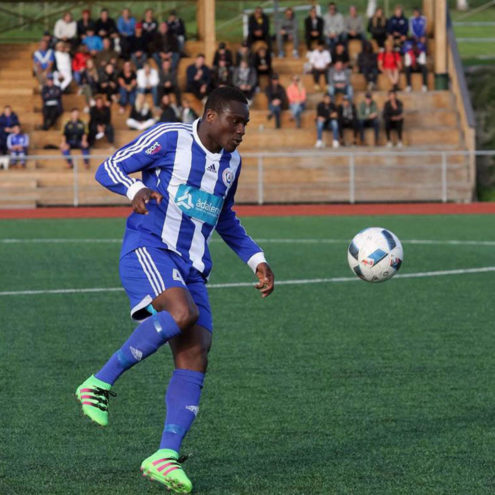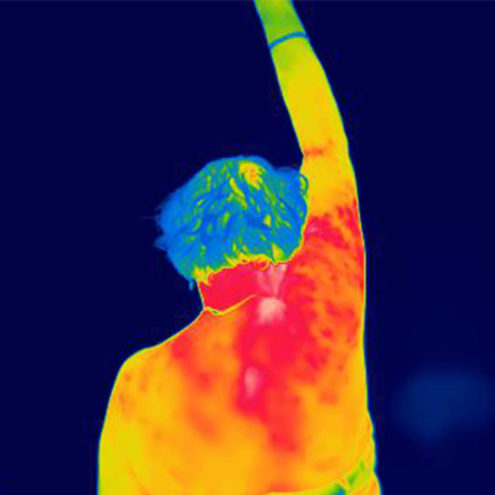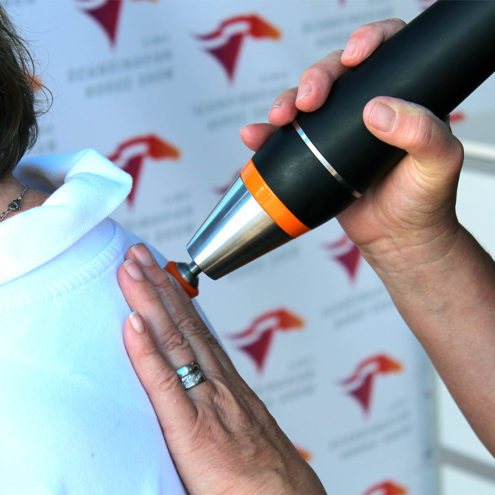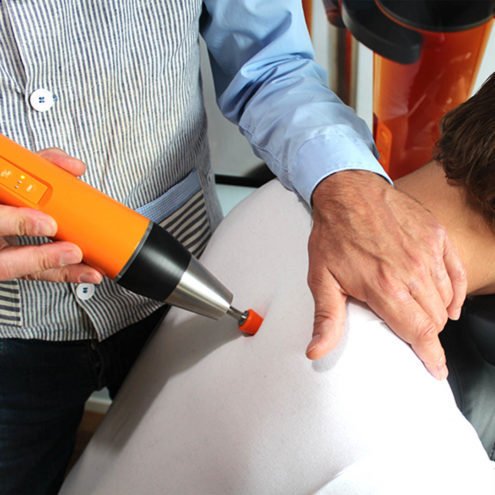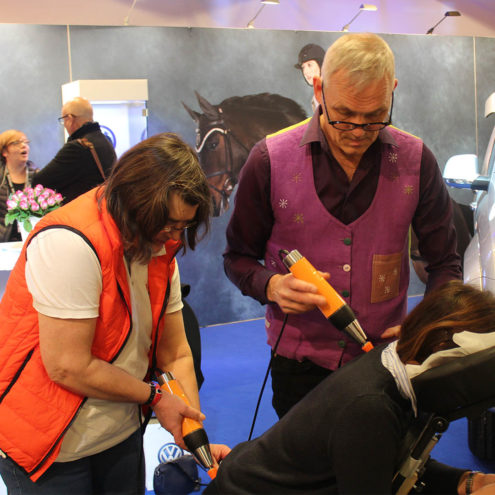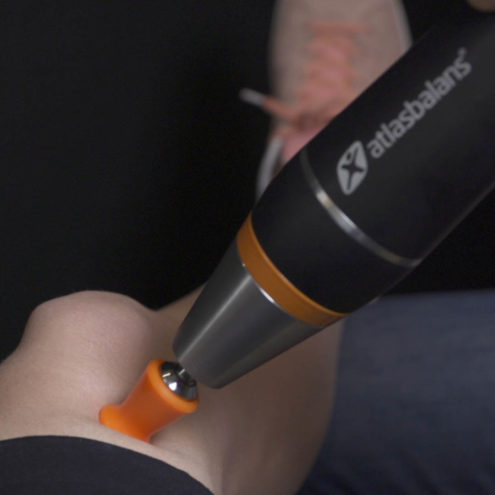Common swimming injuries – Prevention and treatment
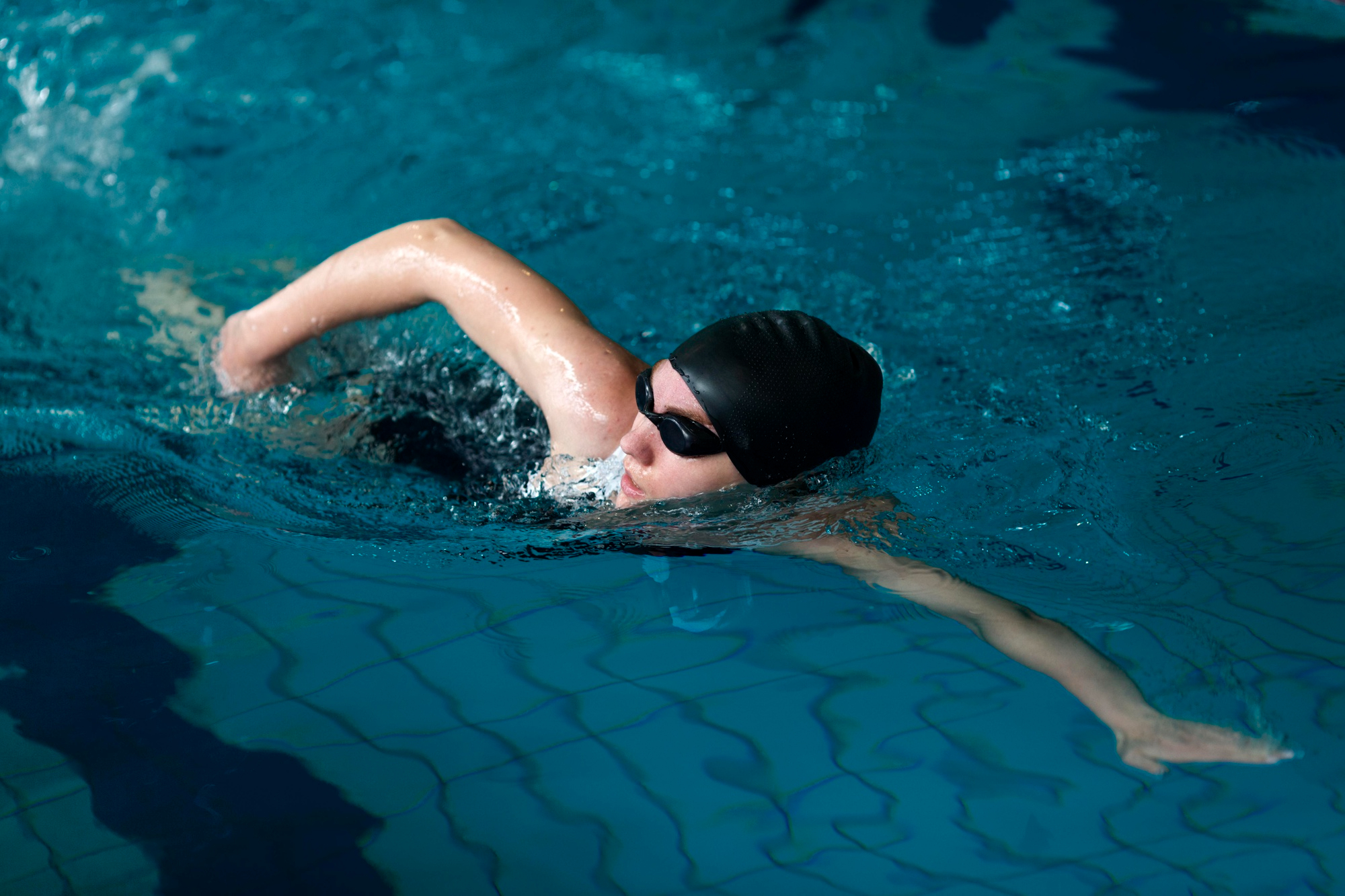
Swimming can be liberating – it’s a gentle form of exercise that strengthens the whole body, improves fitness and is easy on the joints. However, although swimming is a low-intensity sport compared to many other sports, the repetitive strain on certain muscle groups can lead to injury. Shoulders, knees, back and neck are particularly vulnerable areas for swimmers, so it is important to know the most common injuries, their causes and how to prevent them.
In this guide, we look at the most common swimming injuries, what causes them and how you can treat and prevent them. We also explain how Fascia Clinics can help you optimize your body for injury-free and smooth swimming.
Common types of swimming injuries
Although swimming is easy on the joints, the repetitive movements and water resistance put a lot of strain on certain body parts. Here are the most common injuries affecting swimmers:
Shoulder injuries (Swimmer’s Shoulder and impingement syndrome)
Why do shoulder injuries occur?
- Swimmers use their shoulders in every arm stroke, which creates a lot of strain on the rotator cuff muscles and tendons.
- Overloading can lead to inflammation and pain in the shoulder joint.
Common injuries:
- Swimmer’s Shoulder: An overuse injury that causes pain and stiffness due to inflammation of the shoulder joint.
- Impingement syndrome: Occurs when tendons and soft tissue become trapped between the scapula and shoulder, leading to pain and limited mobility.
Symptoms: Pain when swimming, difficulty lifting the arm and weakness in the shoulder.
Knee injuries (Swim knee and overload)
Why do swimmers suffer from knee injuries?
- Breaststroke uses a specific leg kick where the knees are bent and twisted, creating a large load on the inner part of the knee.
Common injuries:
- Swim knee: An inflammation of the ligaments and tendons on the inside of the knee caused by the repetitive motion of breaststroke swimming.
- overuse injuries: Pain and irritation in the knee joint due to repetitive movements and poor mobility of the hips.
Symptoms: Pain when kicking, stiffness in the knee and difficulty pushing off when swimming.
Back problems (Herniated discs and low back pain)
How does swimming affect your back?
- The lumbar spine is stressed in some swimming strokes, especially butterfly and backstroke, where excessive swaying may occur.
- Poor trunk strength can cause compensatory movements, increasing the risk of pain.
Common injuries:
- Herniated disk: When a disk in the spine is pushed out and irritates nerves, which can cause pain and numbness.
- Lower back pain: Due to improper technique and weak core muscles.
Symptoms: Lower back pain, stiffness and discomfort with specific swimming strokes.
Neck pain
Why do swimmers get neck problems?
- Incorrect breathing techniques in crawl or butterfly swimming can create tension in the neck muscles.
- Keeping your head high in the water when breaststroking can also put unnecessary strain on your neck.
Symptoms: Stiffness, tension and pain in the neck after simpass.
Causes and risk factors of swimming injuries
Several factors contribute to swimming injuries, especially when technique is poor or the body is subjected to excessive stress.
Repetitive movements – Swimming involves thousands of arm strokes and leg kicks, which can lead to overuse injuries.
Incorrect technique – Poor arm grip or leg kick mechanics can put unnecessary pressure on your shoulders, knees and back.
Overtraining – Excessive training volume without adequate recovery increases the risk of inflammation and injury.
Lack of strength and mobility – Weak or stiff muscles in the shoulders, trunk and hips can lead to compensatory movements and injuries.
Prevention of swimming injuries
To minimize the risk of injury, it is important to have a balanced exercise routine and a correct technique.
1. Strength and mobility training
Strengthen shoulders, back and core to improve stability in water.
Mobility training for chest muscles and shoulder blades helps to reduce the risk of shoulder impingement.
2. Technical training
Work with a coach to improve your swing and leg kick mechanics.
Make sure your breathing is relaxed and your neck is not tense while swimming.
3. Warming up and stretching
Dynamic warm-up before swimming prepares the muscles for load.
Stretching after exercise helps to reduce stiffness and muscle imbalances.
Treatment of common swimming injuries
If an injury occurs, it is important to take the right steps to speed up recovery.
Acute treatment (RICE method)
R (Rest) – Rest from painful movements.
I (Ice) – Cold can help with acute inflammation.
C (Compression) – Use support if necessary.
E (Elevation) – Keep the injured body part in an elevated position if possible.
Physiotherapy and fascia treatment
Fascia therapy can help release tension and reduce stiffness in muscles and joints.
Strengthening exercises can help prevent recurrent injuries.
Rehabilitation and return to training
To avoid recurring injuries, it is important to build up strength and return to swimming gradually.
Start with light exercise and swimming without pain.
Focus on technique and mobility before increasing the intensity.
Strengthen your body with complementary exercises, such as stability exercises for shoulders and core.
How our specialist team at Fascia Clinics can help you
At Fasciaklinikerna we offer treatment and rehabilitation for swimmers through fascia treatment and individualized training. Our treatments help you to:
Reduce pain and stiffness in shoulders, back and knees.
Improve mobility and technique by optimizing fascia and muscle balance.
Preventing future injuries by identifying and correcting muscular imbalances
Want to swim pain-free and perform better? Visit fasciaklinikerna.se fasciaklinikerna.se and book a consultation today!
 Search
Search







